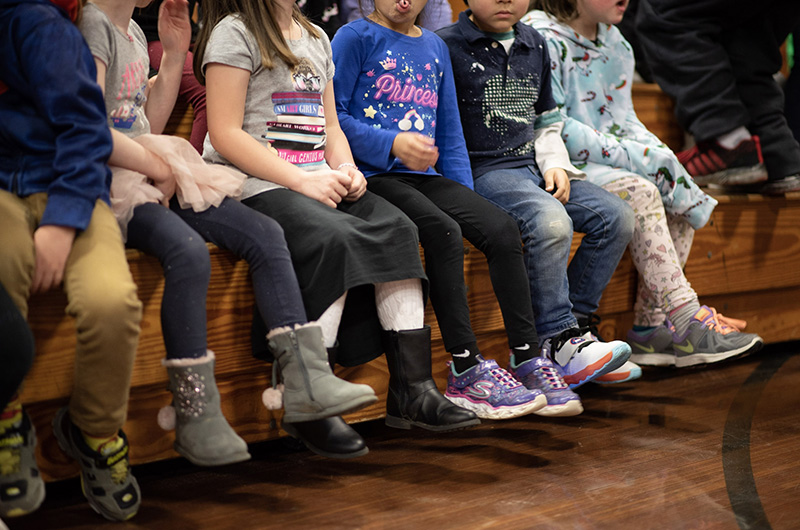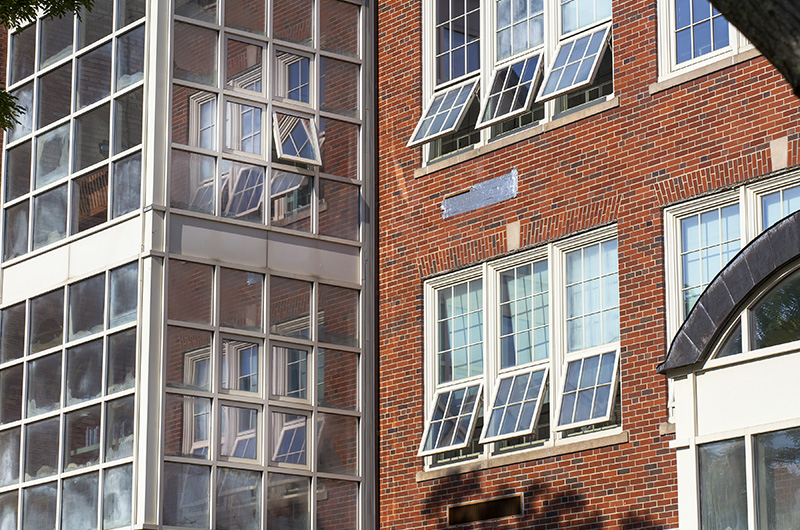The future of Tisbury’s historic public elementary school will be in the hands of town voters this weekend when they convene a special town meeting to take up a $55 million borrowing article that would allow a major overhaul of the crumbling old brick school.
The school question is the sole article on the warrant for the special town meeting which begins at 1 p.m. Sunday outdoors on the grounds of the school. The meeting will take place one day after the annual town meeting Saturday. Moderator Deborah Medders will preside.
The question was singled out for a separate special town meeting to allow time for full debate on an issue that has deeply occupied — and at times divided — school leaders, parents and elected officials for the past three years.
If the question is approved on the town meeting floor, it will move to the ballot box for a vote on June 22 to exempt the bond debt from the provisions of Proposition 2 1/2.
“The community is faced with a daunting decision,” said Harold Chapdelaine, chairman the school building committee, speaking to the Gazette this week. “There’s nothing easy about it.”
It marks the second time in three years for voters to take up the school building question, after a $46 million project to build a new school failed narrowly in 2018.
This time around has been different in a number of ways. For starters the project, which went back to the drawing board almost immediately after the 2018 vote, has the strong support of town boards, including the select board, planning board, finance committee and school committee.
Money for feasibility studies was approved by voters in 2019.
“The time is now to put an end to the debates and begin the renovation and addition project our town voters endorsed at the 2019 town meeting,” wrote Amy Houghton and Jim Rogers in an open letter to voters this week that is published on the Commentary Page in today’s edition. Ms. Houghton is chairman of the school committee. Mr. Rogers is chairman of the select board.
The letter offers an endorsement from their boards as well as the planning board and finance committee.
Dozens of public meetings and community forums have been held on the project over the past year and a half, all while some 300 town school children and their teachers and support staff were being shuffled about, first due to the discovery of lead paint in the building, and later due to the pandemic.
The construction project would expand and modernize the crowded K-8 school off West Spring street from its current size of 56,000 square feet to almost 76,000 square feet, with a preschool taking the place of a trailer classroom currently in use on the grounds.
The schematic building design by Boston-based Tappé Architects preserves the envelope of the 1929 building, but would strip everything down to the studs and rebuild an energy-neutral school, among other things bringing it into compliance with the Americans with Disabilities Act of 1990.
Drawings include an airy cafeteria with a two-story ceiling and skylights, a central staircase and elevator replacing the former two staircases at the ends of the building, flexible teaching and study spaces and a solar-ready roof.
Efficient heating and ventilation systems would replace old boilers and eliminate ancient fixtures and hazardous lead paint from the building.
A new gymnasium/auditorium, built at the level of the parking lot, will replace the current gym, which Mr. Rogers and Ms. Houghton said is regulation size for a K-4 school.
“Renovating the gym was determined to be a poor investment for the return, as it will require additional construction elsewhere to gain the space needs,” they said in the letter to voters.
The gym will also be available for public use, including town meetings and as an emergency shelter. And because it is located at parking level, the addition will not rise above the roof height of the current gym.
Students will be housed in a temporary facility on nearby town-owned land while construction is under way.
The price tag for property owners remains high, Mr. Chapdelaine acknowledged: borrowing $55 million over 30 years would add about $93 in yearly taxes per $100,000 of assessed value.
But after speaking with more than 100 people in a series of online “coffee talks” over the past few weeks, he said most saw the value in the school bond proposal.
“Very few people spoke truly negatively about the cost,” Mr. Chapdelaine said. “I can’t say anyone celebrated it, but there was understanding of it.”
Some taxpayers even indicated they were pleased that the yearly amount is smaller than in the 2018 proposal, which was for a 20-year bonding period, he said.
Approving the $55 million in bonds requires an override of Proposition 2 1/2, the state tax cap which limits the amount by which municipalities may raise property taxes.
A two-thirds vote is required for approval at the special town meeting, but the success or failure of the school construction project rests on a simple plurality in the June 22 election.
Should the measure pass, Mr. Chapdelaine said the first order of business will be to hire a construction manager.
“That person would manage the construction of the temporary school, with the goal being that the children would move in . . . at holiday break,” he said.
Once the school population has moved to the temporary site, on town-owned land nearby, interior demolition would begin in January 2022.
“We would repopulate the school in January of 2024,” Mr. Chapdelaine said.
And if the measure fails?
“The problem doesn’t go away,” Mr. Chapdelaine said. “We all know what the school is . . . we have band-aids on existing hazardous material conditions [and] deteriorated mechanical problems.”
Projected increases in the student population — from about 290 this year to 390 in 2029 — would likely force more classes out of the overcrowded school and into trailers on the grounds, Mr. Chapdelaine said.
“In the meantime, the cost of construction only goes up, and the professionals tell us five per cent a year,” he said.









Comments (9)
Comments
Comment policy »